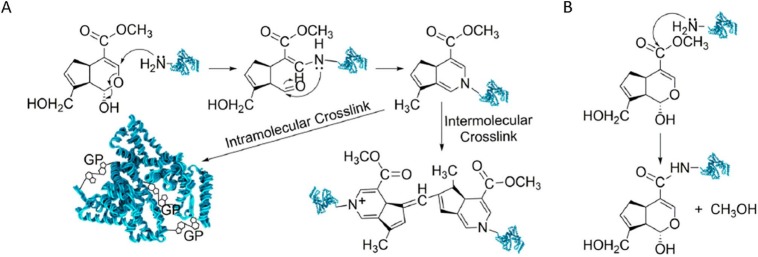Hydrogels are a popular drug delivery vehicle. You can encapsulate drugs including large biological macromolecules like proteins in them, to be released in the body. Some hydrogels use chemical crosslinking to create the hydrogel matrix – with the drug in it. Can protein drugs encapsulated this way participate in those crosslinks? What if they do? How will that affect their subsequent release?
We started asking these questions when attempting to deliver protein drugs by encapsulating them in hydrogel-forming microneedle array patches. These were important questions, and now we have the answers.
In this paper, we address these questions using bovine serum albumin as a model drug, and a genipin-chitosan hydrogel as the drug delivery vehicle. Using a combination of empirical fluorometry data and mathematical modelling, we investigate the kinetics of the interactions of the protein drug and genipin (the crosslinker).

